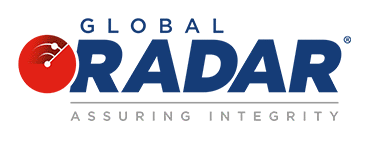With so much focus on anti-money laundering (AML), it might be wise to revisit fundamental AML ethical and compliance criteria. A good AML compliance programme requires a strong foundation. Laying a good foundation isn’t as difficult as you would think. Here are some things to consider and where to begin.
- The Appointment of a Compliance Officer
The hiring of a Compliance Officer is a step in the right direction. Someone must be in charge of ensuring compliance with the AML programme on an ongoing basis. This person should have the authority, resources and training necessary to execute the job, all of which should be commensurate to the company’s risks.
- Internal Policy, Procedures and Controls’ Development
Certain norms and processes must guide the company’s actions. Policies and procedures should be customised to the organisation’s specific needs and based on a documented risk assessment. Among others, the company must comply with all registration, transaction activity documentation, client identity and record-keeping requirements, currency transaction reporting, monetary instrument recording, suspicious activity reporting and ongoing training requirements.
- Continuous and Germane Training of Employees
It’s worthless to appoint a compliance officer or keep written rules and procedures on a shelf if they are not adhered to. Workers must be skilled and knowledge dispensed must be current and relevant. The staff must then be managed using methods that the majority of us would be favourable with. At least once a year, the compliance officer must educate all employees on the foundations of AML compliance and the details of the company’s AML operations. The amount and type of training given should be suitable for the risks faced by the firm, and it should be documented.
- External Testing and Review
Independent testing is the fourth pillar of the compliance program. For impartiallity, the testing cannot be done by the internal compliance person or anybody with direct responsibility for compliance. To be successful, testing must be conducted by someone knowledgeable about the anti-money laundering programme.
Other Important Pillars of AML Programmes
According to a report1 by the United Nations Office on Drugs and Crime, 99% of illegal income goes undetected, so institutions should assume they are dealing with a significant quantity of dirty money. As a consequence, there are additional pillars for the AML programme that must be factored in.
- Customer Due Diligence (CDD)
This is the process of doing background checks and other sorts of screening on clients before onboarding to verify that they have been adequately risk-assessed. Anti-money laundering and Know Your Customer (KYC) operations typically employ CDD. Its mission is to assist banks and other financial institutions in the detection of financial crimes such as money laundering, terrorist funding, human and drug trafficking and fraud.
- Risk Assessment as a Pillar of AML
We have left the most critical pillar of an AML compliance programme for the last. Risk assessment is a cornerstone of AML compliance and is the first step in developing an effective programme. Because no two institutions confront the same set of AML threats, your AML programme should take into account your goods and services, your customers and clients, and your geographic location.
Consequently, your AML risk management strategy should be tailored to your company’s unique needs; ideally, your AML programme will reduce both the administrative and legal risks of over-compliance. Rather than a one-size-fits-all response to the financial landscape’s core concerns, each institution must develop a strategy that matches its risk profile.

